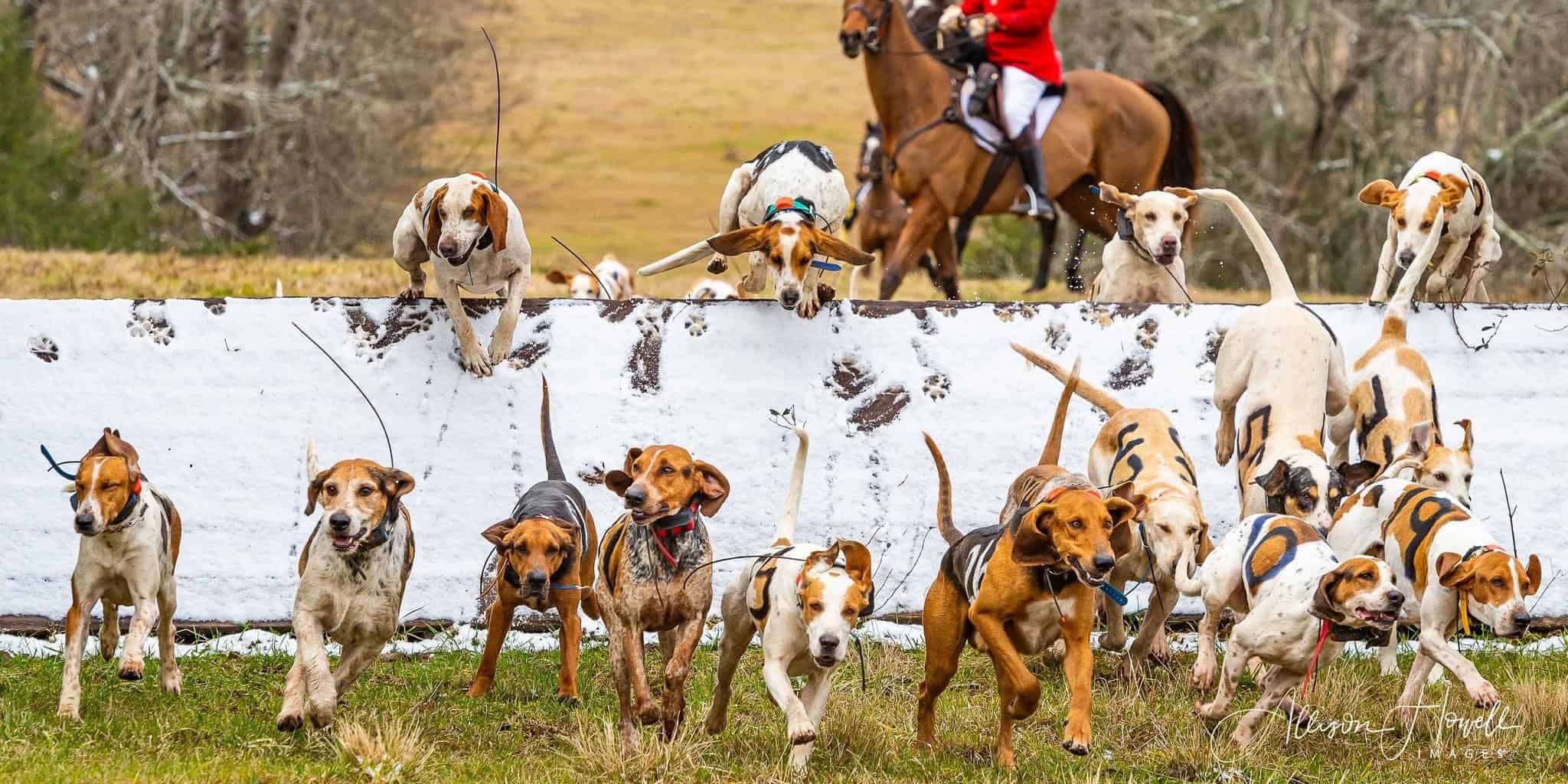
Mounted foxhunting has existed in America since Colonial days. Hounds of various types were brought from Europe by early settlers. By 1900, the American foxhound was the product of breeding their descendants with hounds that continued to be imported, especially from England, Ireland and France. The oldest continuing hunt in North America is the Montreal Hunt in Canada, established in 1826. The oldest continuing hunt in the United States is Piedmont Hunt, established in Virginia in 1840. Both packs continue very successfully to this day.
Through the years North American foxhunting has evolved its own distinct flavor which is noticeably different from the British. The most obvious difference is that in North America the emphasis is on the chase rather than the kill. In addition, the coyote, not the fox, is the quarry most often hunted.
The hunt begins with the mounted huntsman leading the pack of hounds to an area known or suspected to be inhabited by a wild fox or coyote. There, the huntsman gives the pack a queue to commence hunting. With that queue, hounds move ahead of the huntsman and spread out, with their noses to the ground, searching for scent. This continues until the hounds find a “line” – a route traversed by a fox or coyote – with their noses.
When hounds “find”, they “open” – begin to bark and bay. The volume and steadiness of the hounds’ voices is in direct correlation to the strength of the scent. Sometimes, the scent is lost as quickly as it is found. Other times, a “strike” – finding a fresh line – turns into a miles-long chase that lasts for an hour or more and offers riders multiple views of the quarry with hounds in “full cry” – all following and baying. Most of the time, it’s something in between.
A successful hunt ends when the quarry (fox or coyote) is accounted for by entering a hole in the ground, called an earth. Once there, hounds are rewarded with praise from their huntsman. On rare occasions, hounds may capture and kill the quarry, but most of the time the quarry gets away. When hounds do not account for quarry, they generally lose the scent and that ends the hunt. Even such days are fun as the scenery is always beautiful, fellow foxhunters are enjoyable, watching hounds work is inspiring, and the chase, when it occurs, is always a thrill!